*NURSING > QUESTIONS & ANSWERS > ATI pediatrics proctored exam (ASSURED A) (All)
ATI pediatrics proctored exam (ASSURED A)
Document Content and Description Below
ATI pediatrics proctored exam (ASSURED A) ATI pediatrics proctored exam Chapter 1: Family centered nursing care 1. Parenting styles -Dictatorial or authoritarian: -Parents try to control th... e child’s behaviors and attitudes through unquestioned rules and expectations -Ex: The child is never allowed to watch television on school nights -Permissive: -Parents exert little or no control over the child’s behaviors, and consult the child when making decisions -Ex: The child assists with deciding whether he will watch television -Democratic or authoritative: -Parents direct the child’s behavior by setting rules and explaining the reason for each rule setting -Ex: The child can watch television for 1 hr on school nights after completing all of his homework and chores -Parents negatively reinforce deviations form the rules -Ex: The privilege is taken away but later reinstated based on new guidelines Chapter 2: Physical assessment findings 1. Vital signs -Usually vital signs are all high except for BP -Temperature: -3 – 6 months 99.5 -1 year 99.9 -3 year 99.0 -5 years 98.6 -7 years 98.2 -9 – 11 years 98.1 -13 years 97.9 -Pulse: -Newborn 80 – 180/min -1 weeks – 3 months 80 – 220/min -3 months – 2 years 70 – 150/min -2 – 10 years 60 – 110/min -10 years and older 50 – 90/min -Respirations: -Newborn – 1year 30 – 35/min -1 – 2 years 25 – 30/min -2 – 6 years 21 – 25/min -6 – 12 years 19 – 21/min -12 years and older 16 – 19/min -Blood pressure: -Low as a baby but increases the older they get -Infants: -Systolic: 65-78 -Diastolic: 41-52 2. Head -Fontanels should be flat -Posterior fontanel: -Closes by 6-8 weeks -Anterior fontanel: -Closes by 12-18 months 3. Teeth -Infants should have 6-8 teeth by 1 year old -Children and adolescents should have teeth that are white and smooth, and begin replacing the 20 deciduous teeth with 32 permanent teeth 4. Infant Reflexes Stepping Birth to 4 weeks Palmar Grasp Birth to 3 months Tonic Neck Reflex (Fencer Position) Birth to 3 – 4 months Sucking and Rooting Reflex Birth to 4 months Moro Reflex (Fall backward) Birth to 4 months Startle Reflex (Loud Noise) Birth to 4 months Plantar Reflex Birth to 8 months Babinski Reflex Birth to 1 year Chapter 3: Health promotion of infants (2 days to 1 year) 1. Physical Development -Weight: -Doubled by 5 months -Tripled by 12 months -Quartered by 30 months -Height: -2.5 cm (1 in) per month for the first 6 months -Length: -Increases by 50% by 12 months -Dentition: -First teeth erupt between 6-10 months 2. Motor skill development 1 Month o Head lag o Strong grasp reflex 2 Months o Lifts head when prone o Holds hand in open position | Grasp reflex fades 3 Months o Raises head and shoulders when prone | Slight head lag o No grasp reflex | Keeps hands loosely open 4 Months o Rolls from back to side o Grasp objects with both hands 5 Months o Rolls from front to back o Palmar grasp dominantly 6 Months o Rolls from back to front o Holds bottle 7 Months o Bears full weight on feet | Sits, leaning forward on both hands o Moves objects from hand to hand 8 Months o Sits unsupported o Pincer grasp 9 Months o Pulls to a standing position | Creeps on hands and knees instead of crawling o Crude pincer grasp | Dominant hand is evident 10 Months o Prone to sitting position o Grasps rattle by its handle 11 Months o Walks while holding onto something | Walks with one hand held o Places objects into a container | Neat pincer grasp 12 Months o Stands without support briefly | Sits from standing position without assistance o Tries to build a two-block tower w/o success | Can turn pages in a book 3. Cognitive development -Piaget: sensorimotor (birth to 24 months) -Object Permanence: objects still exists when it is out of view -Occurs at 9-10 months 4. Language development -3-5 words by the age of 1 year 5. Psychosocial development -Erikson: Trust vs. Mistrust: - Learn delayed gratification -Trust is developed by meeting comfort, feeding, simulation, and caring needs -Mistrust develops if needs are inadequately or inconsistently met or if needs are continuously met before being vocalized by the infant 6. Social development -Separation Anxiety: protest when separated from parents -Begins around 4-8 months -Stranger Fear: ability to discriminate between familiar and unfamiliar people -Begins 6-8 months 7. Age appropriate activities -Rattles -Playing pat-a cake -Brightly colored toys -Playing with blocks 8. Nutrition -Breastfeeding provides a complete diet for infants during the first 6 months -Solids are introduced around 4-6 months -Iron-fortified cereal is the first to be introduced -New foods should be introduced one at a time, over a 5-7 day period to observe for allergy reactions -Juice and water usually not needed for 1st year -Appropriate finger foods: -Ripe bananas -Toast strips -Graham crackers -Cheese cubes -Noodles -Firmly cooked vegetables -Raw pieces of fruit (except grapes) 9. Injury prevention -Avoid small objects (grapes, coins, and candy) -Handles of pots and pans should be kept turned to the back of the stove -Sunscreen should be used when infants are exposed to the sun -Infants and toddlers remain in a rear-facing car seat until age 2 -Crib slats should be no farther apart than 6 months -Pillows should be kept out of the crib -Infants should be placed on their backs for sleep Chapter 4: Health Promotion of Toddlers (1 to 3 years) 1. Physical development -Weight: -30 months: 4 times the birth weight -Height: -Toddlers grow 7.5 cm (3 in) per year -Head circumference and chest circumference: -Usually equal by 1 to 2 years of age 2. Cognitive development -Piaget: sensorimotor stage transitions to preoperational stage 19 – 24 months -Object Permanence: fully developed 3. Language development -1 year: using one-word sentences -2 years: 300 words, multiword sentences by combining 2-3 words 4. Psychosocial Development -Autonomy vs. Shame and Doubt -Independence is paramount for toddlers who are attempting to do everything for themselves -Use negativism or negative responses to express their independence -Ritualism, or maintaining routines and reliability, provides a sense of comfort for toddlers as they begin to explore the environment beyond those most familiar to them 5. Age appropriate activities -Parallel play: Toddlers observe other children and then might engage in activities nearby -Appropriate activities: -Playing with blocks -Push-pull toys -Large-piece puzzles -Thick crayons -Toilet training can begin when toddlers have the sensation of needing to urinate or defecate 6. Motor skill development 15 Months o Walks without help | Creeps up stairs o Uses a cup well | Builds 2 tower blocks 18 Months o Runs clumsily | Throws overhand | Jumps in place w/ both feet | Pulls/Pushes toys o Manages a spoon w/o rotation | Turns pages 2-3 pages /time | Builds 3-4 blocks | Uses crayon to scribble spontaneously | Feeds self 24 Months (2 years) o Walks backwards | Walks up/down stairs w/ 2 feet on each step o Builds 6-7 blocks | Turns pages 1 @ a time 30 Months (2.5 years) o Balances on 1 leg | Jumps across floor / off chair w/ both feet | Walks tiptoe o Draws circles | has good hand-finger coordination 7. Nutrition -Whole milk at 1 year old -Can start drinking low-fat milk after 2 years of age -Juice consumption should be limited to 4-6 oz. per day -Foods that are potential choking hazards: -Nuts -Grapes -Hot dogs -Peanut butter -Raw carrots -Tough meats -Popcorn Chapter 5: Health Promotion of Preschoolers (3-6 years) 1. Physical development -Weight: -Gain 2-3 kg (4.5-6.5 lb) per year -Height: -Should grow 6.9-9 cm per year 2. Fine and gross motor skills 3 Years o Toe and heel walks o Tricycle o Jumps off bottom step o Stands on one foot for a few seconds 4 Years o Hops on one foot | Skips o Throws ball overhead o Catches ball reliably 5 Years o Jumps rope o Walks backward o Throws and catches a ball 3. Cognitive development -Piaget: preoperational stage -Moves from totally egocentric thoughts to social awareness and the ability to consider the viewpoint of others -Magical thinking: -Thoughts are all-powerful and can cause events to occur -Animism: -Ascribing life-like qualities to inanimate objects 4. Psychosocial development -Erikson: Initiative vs. guilt: -Preschoolers become energetic learners, despite not having all of the physical abilities necessary to be successful at everything -Guilt can occur when preschoolers believe they have misbehaved or when they are unable to accomplish a task -During stress, insecurity, or illness, preschoolers can regress to previous immature behaviors or develop habits (nose picking, bed-wetting, thumb sucking) 5. Age appropriate activities -Preschooler’s transition to associative play -Play is not highly organized, but cooperation does exist between children -Appropriate activities: -Playing ball -Putting puzzles together -Riding tricycles -Playing pretend dress up activities -Role-playing 6. Sleep and rest -On average, preschoolers need about 12 hours of sleep -Keep a consistent bedtime routine -Avoid allowing preschoolers to sleep with their parents [Show More]
Last updated: 1 year ago
Preview 1 out of 45 pages
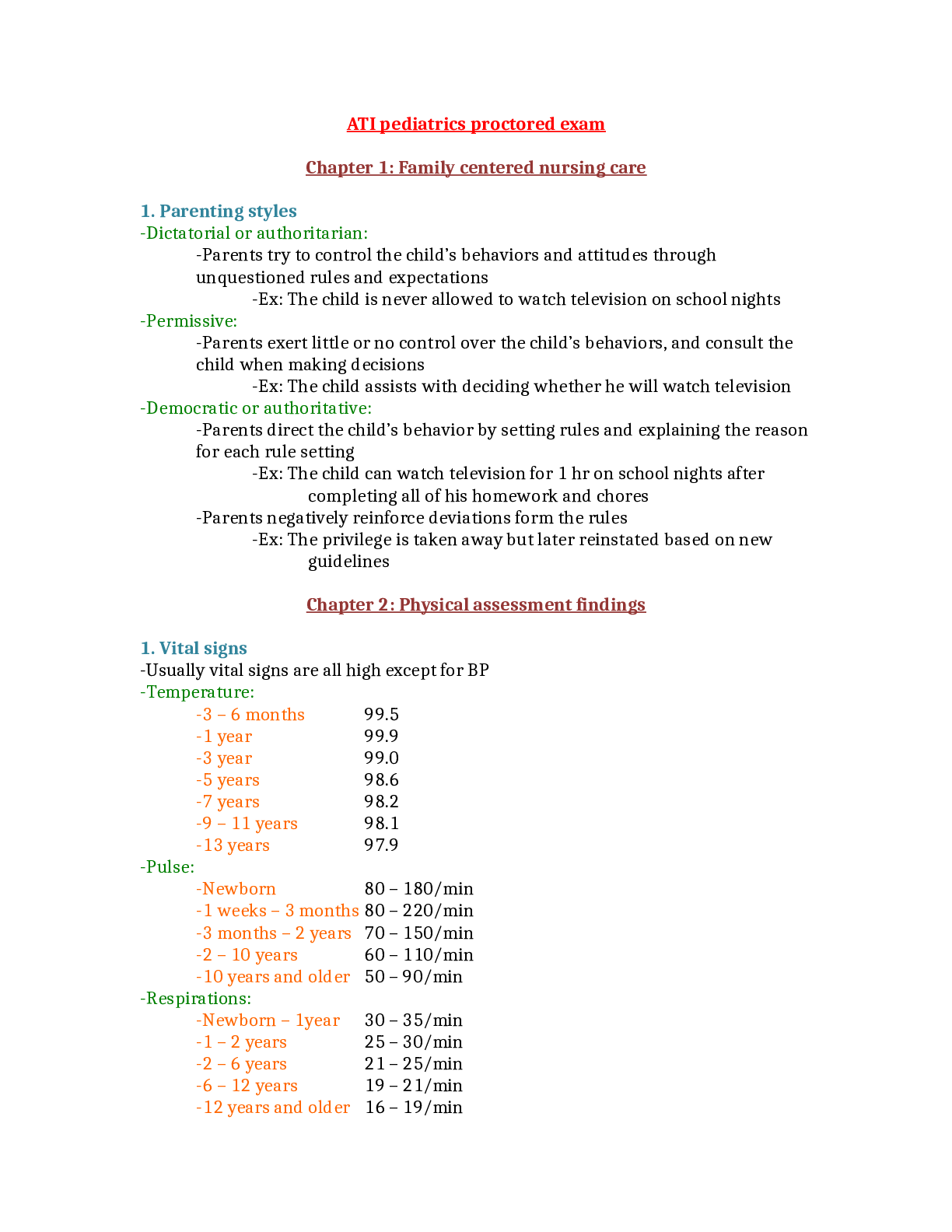
Reviews( 0 )
Document information
Connected school, study & course
About the document
Uploaded On
Apr 11, 2021
Number of pages
45
Written in
Additional information
This document has been written for:
Uploaded
Apr 11, 2021
Downloads
0
Views
53

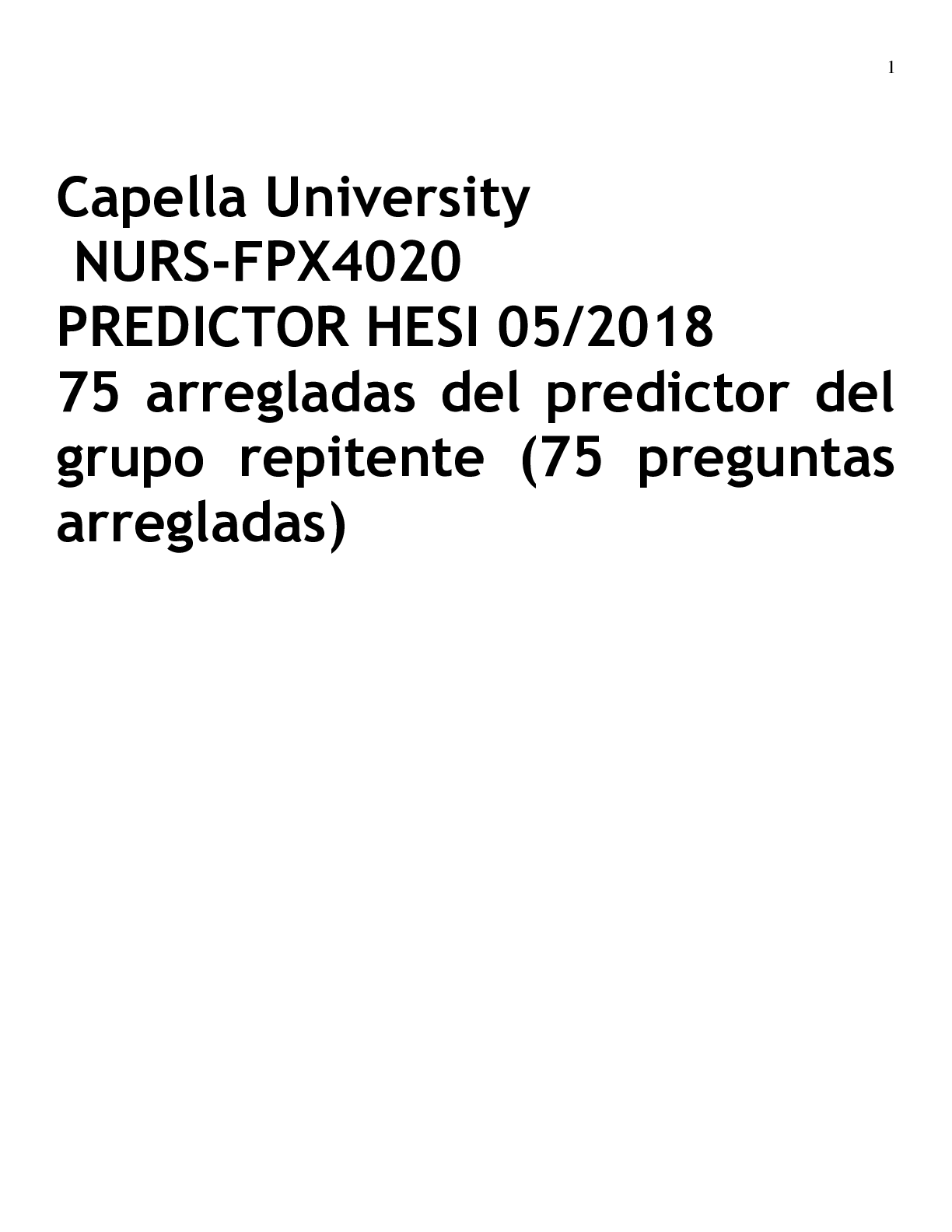
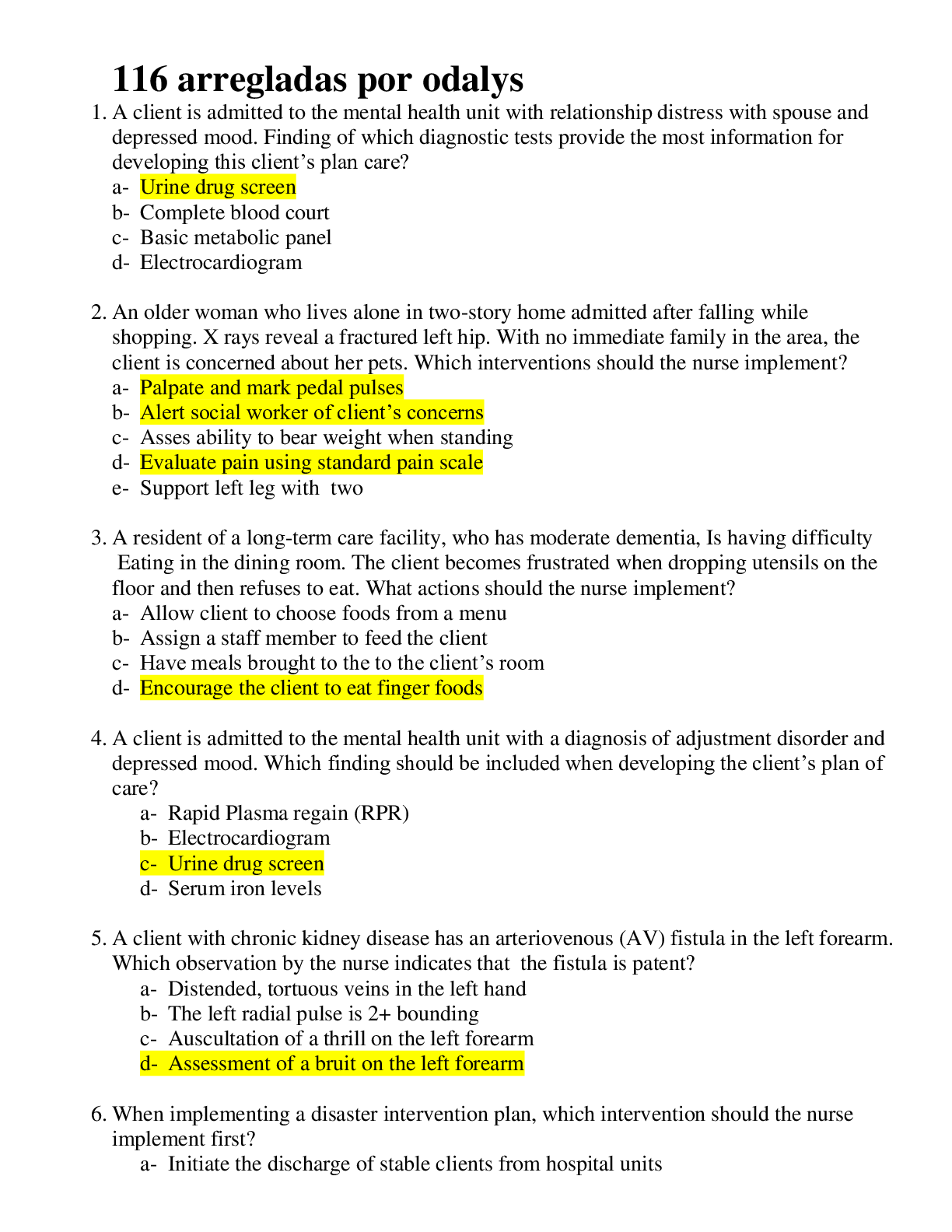
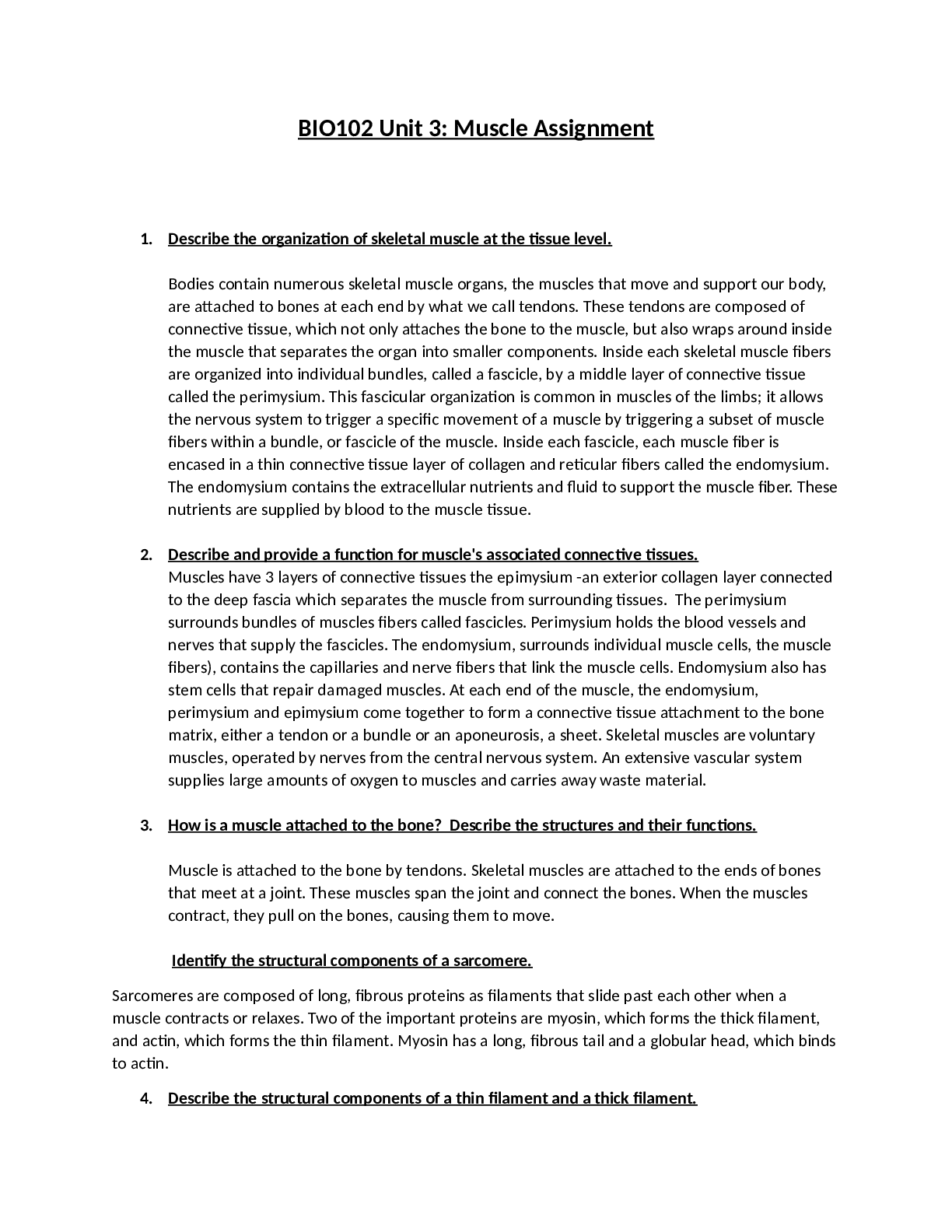


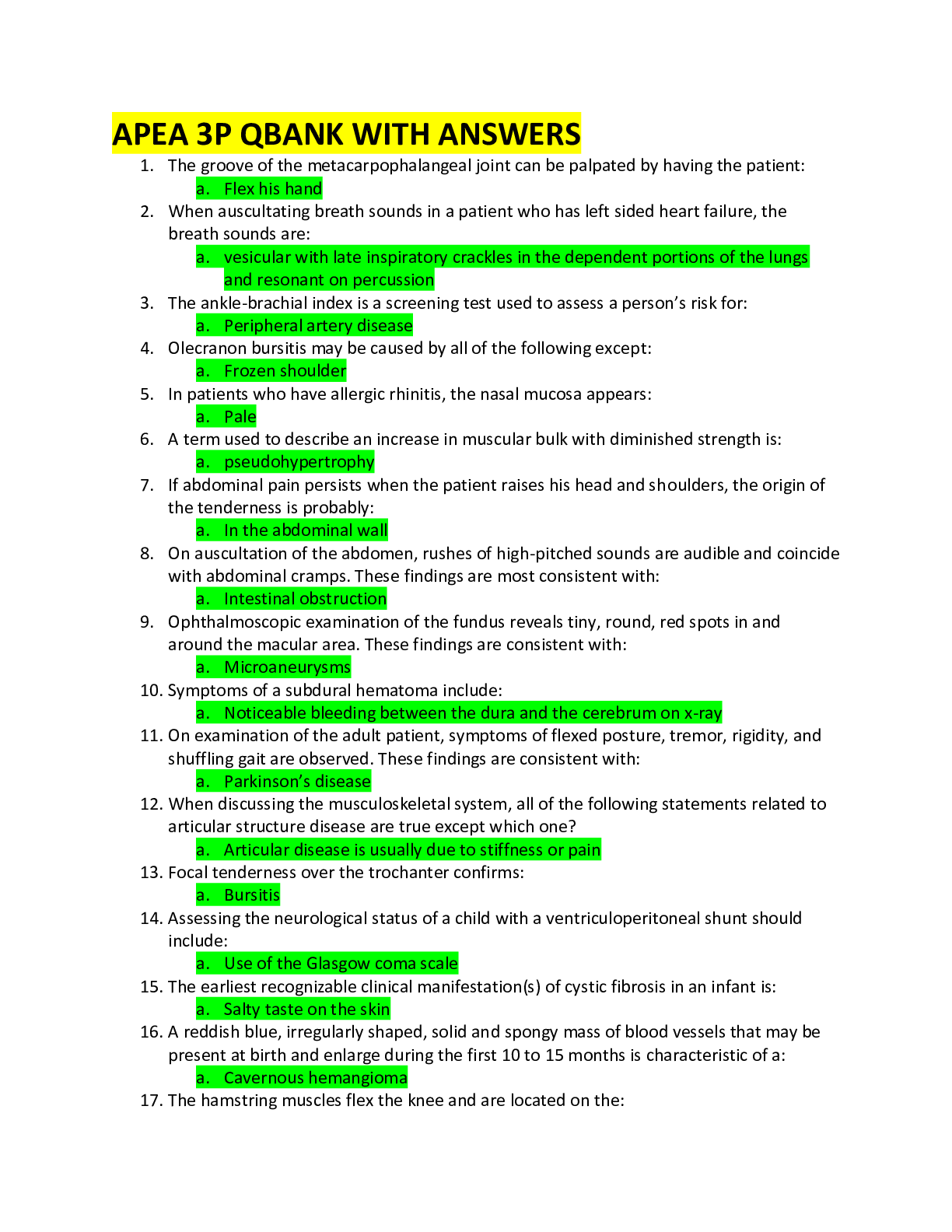
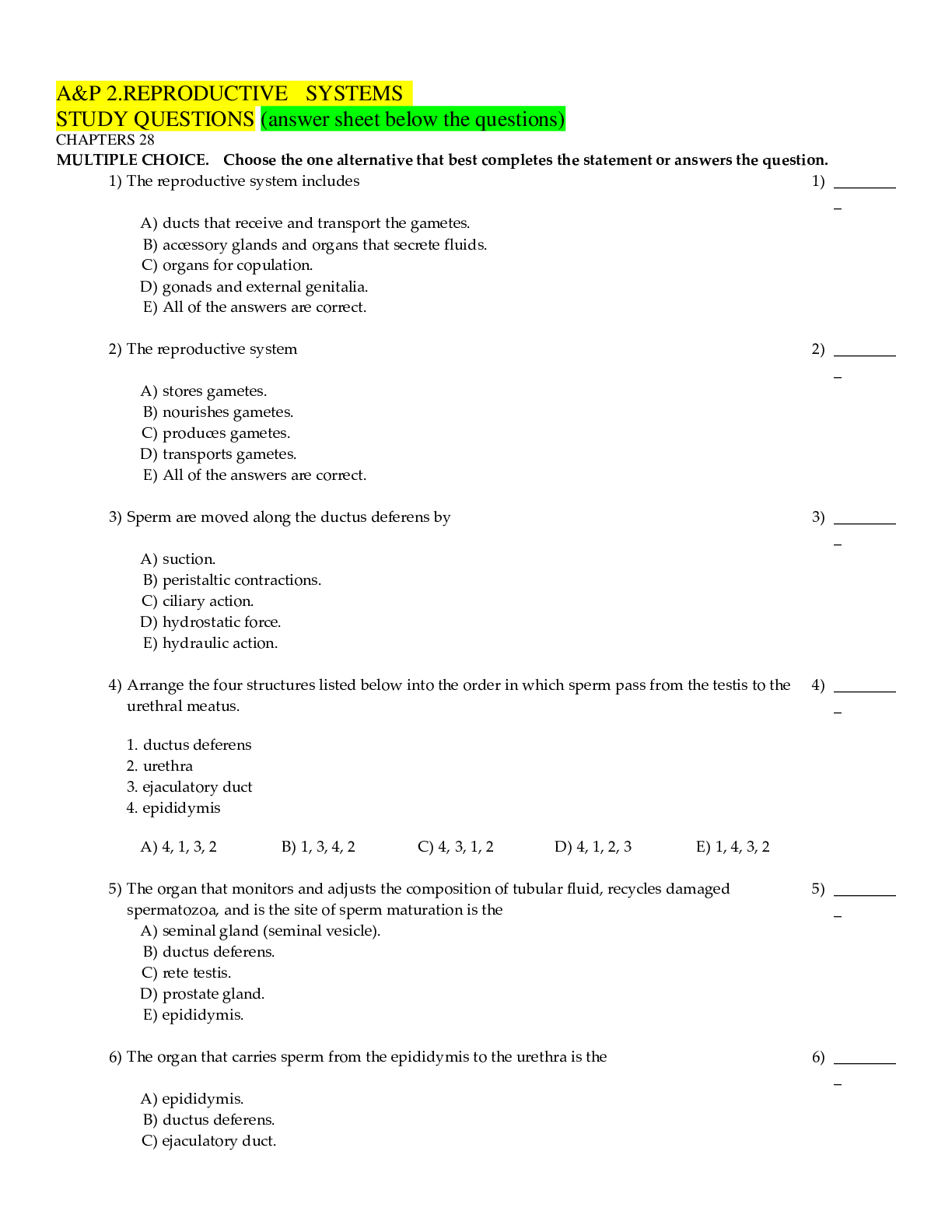
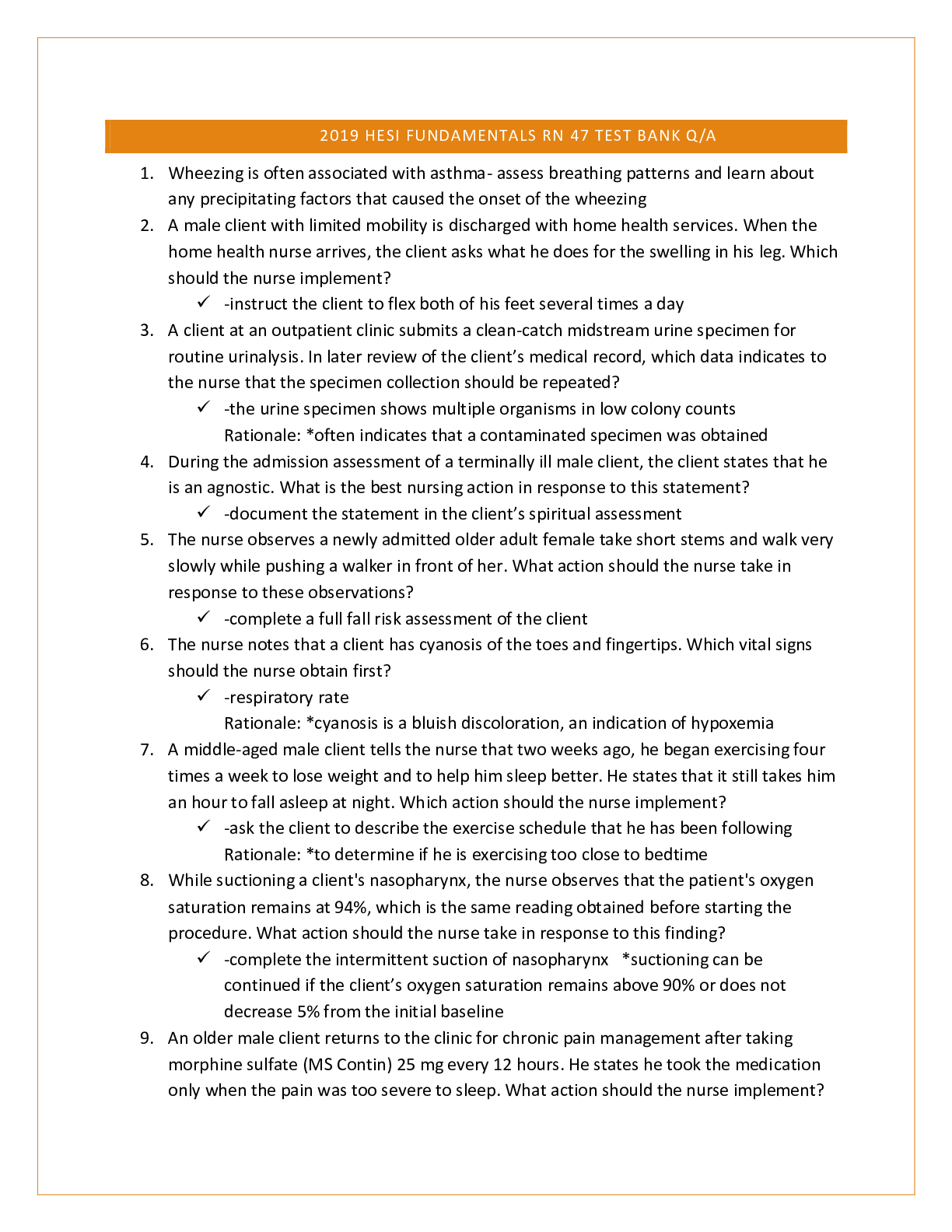
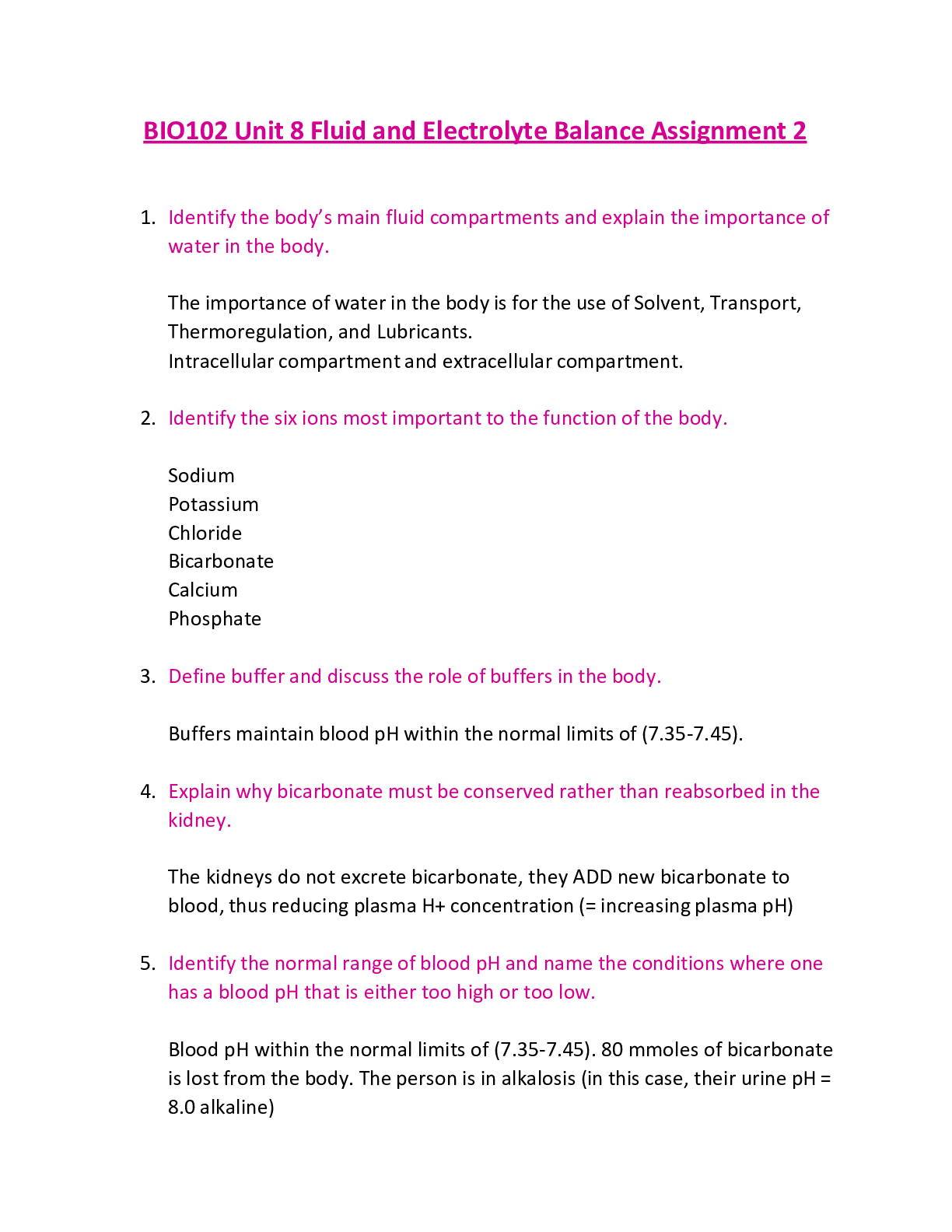
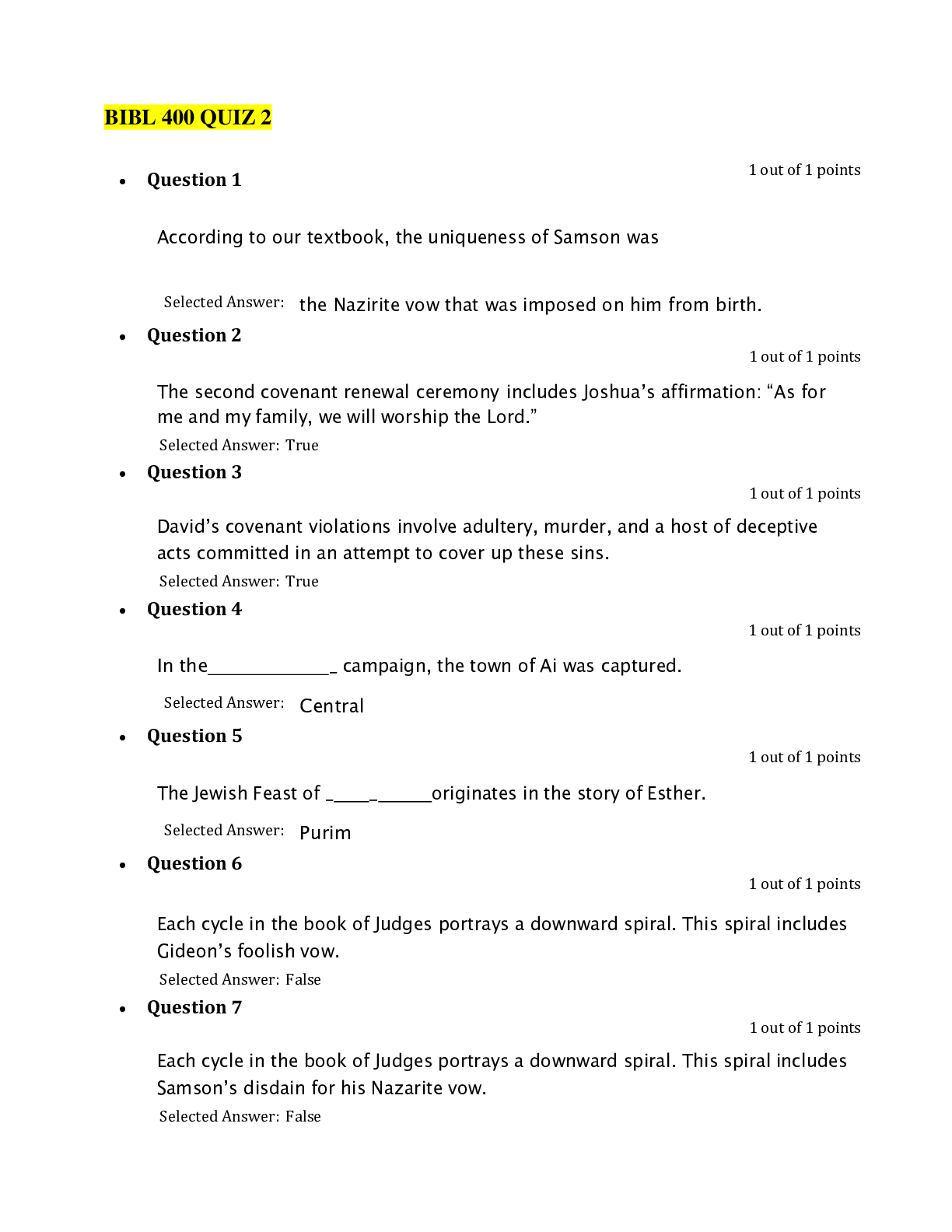

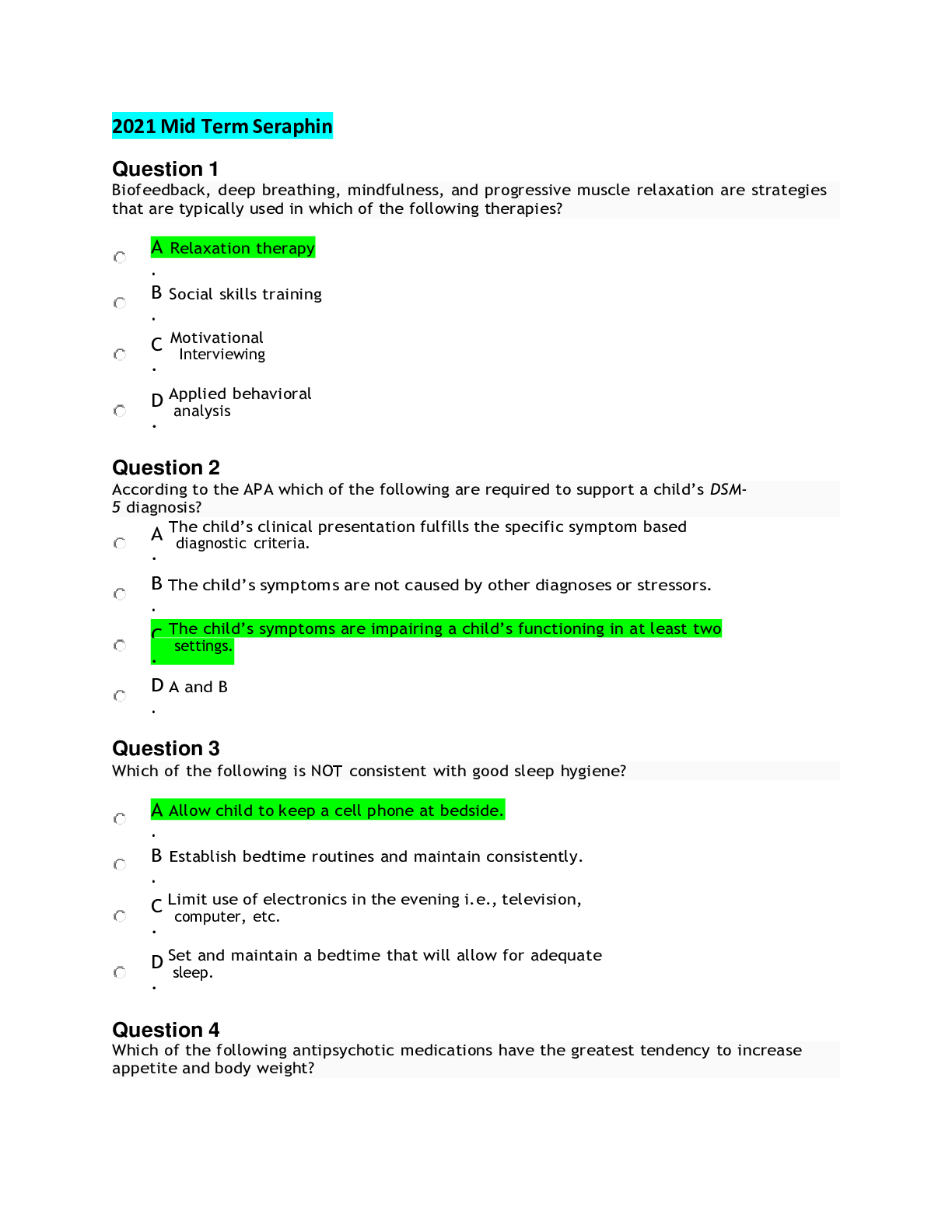


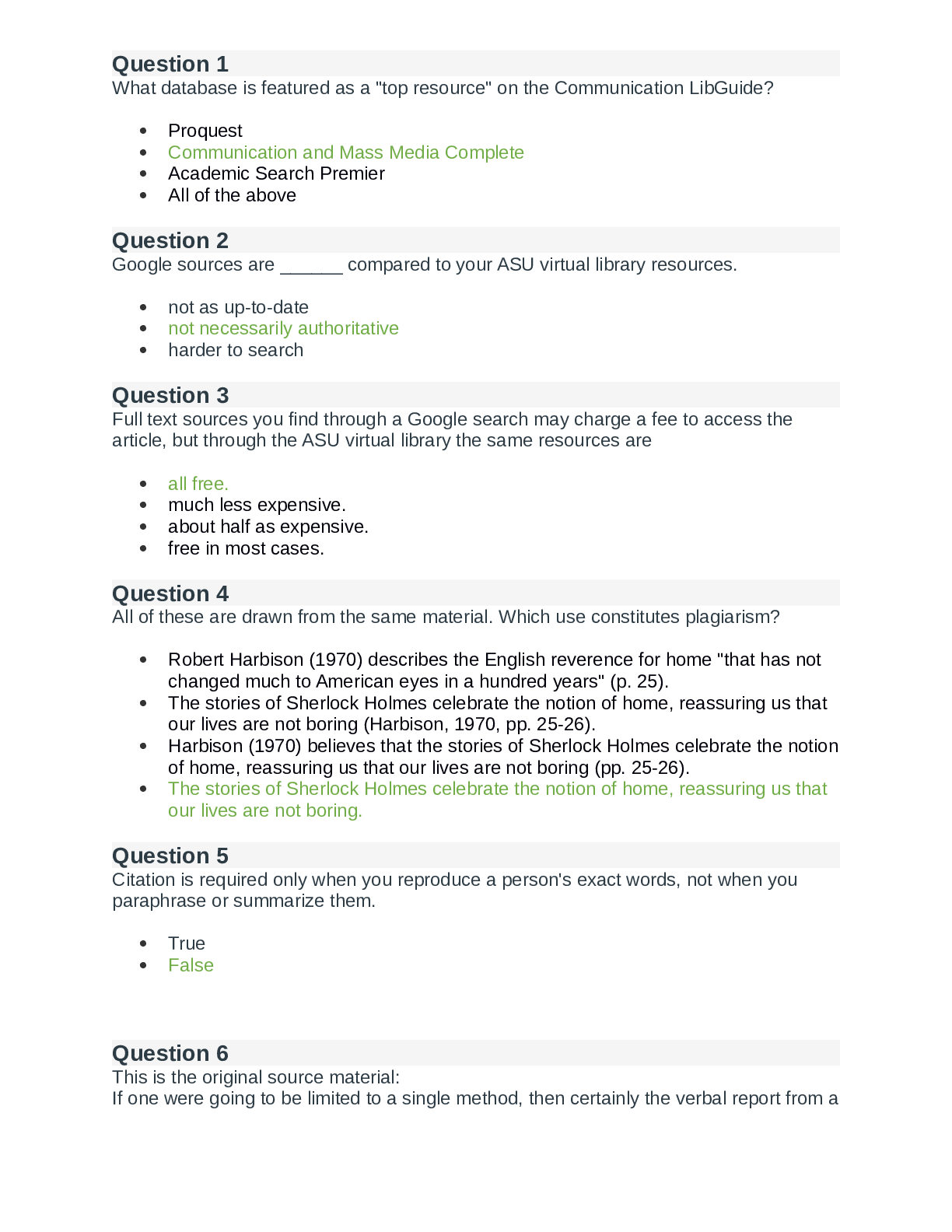




.png)

.png)

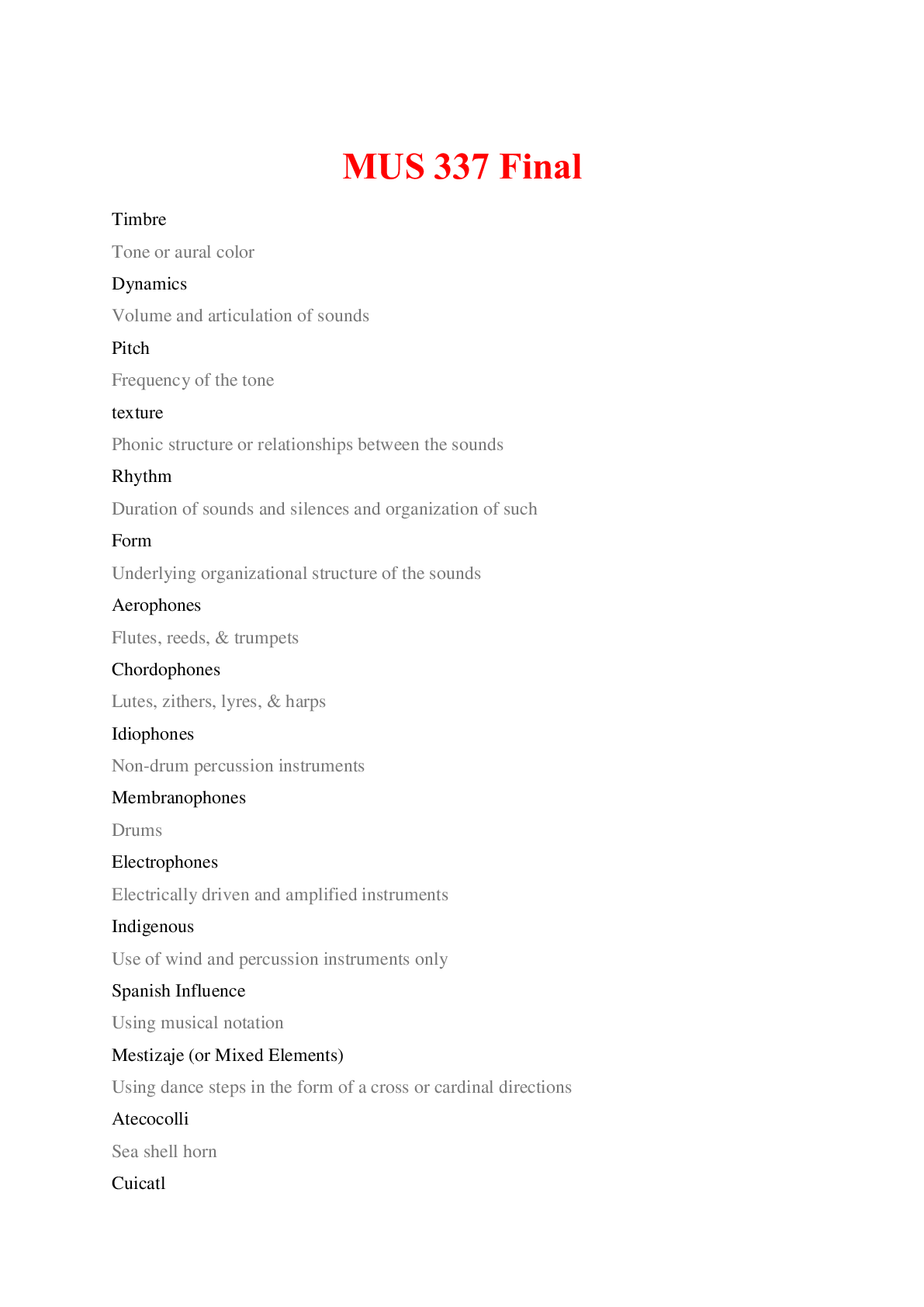

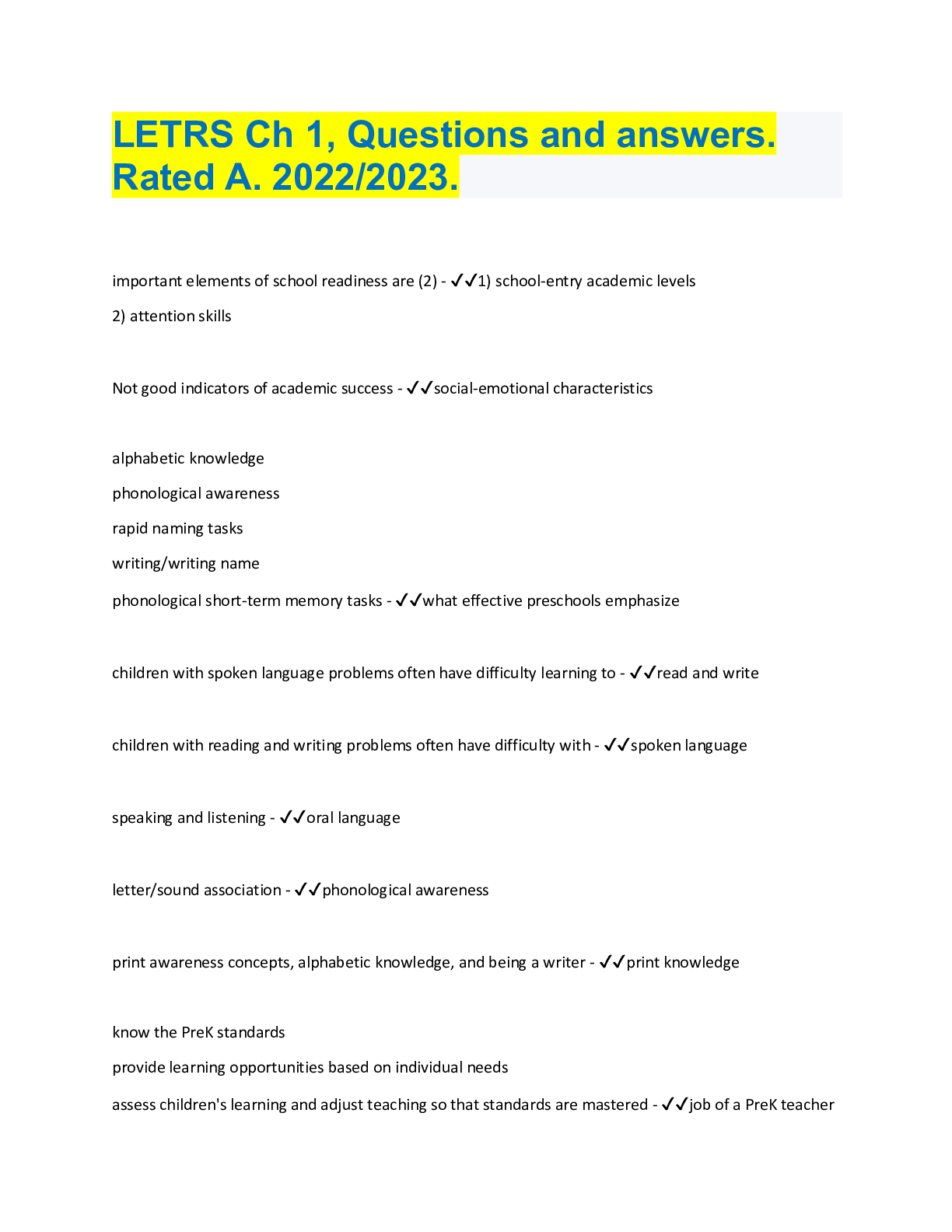
.png)
.png)

.png)
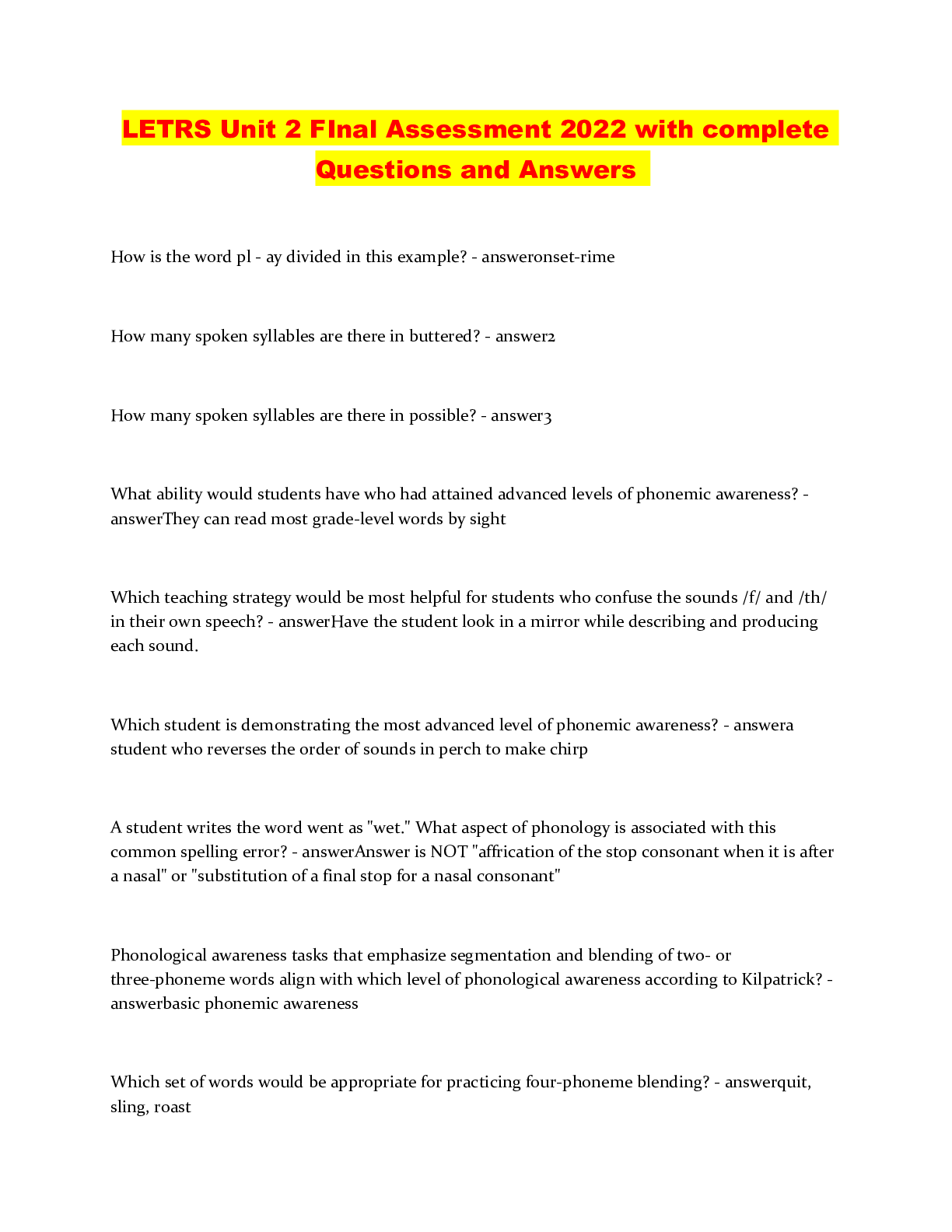



.png)
.png)

